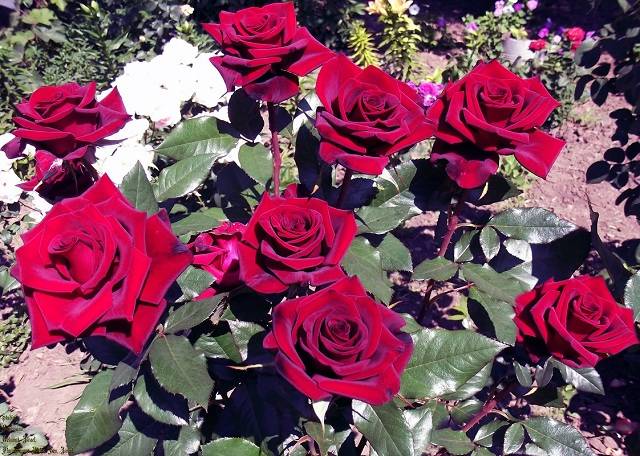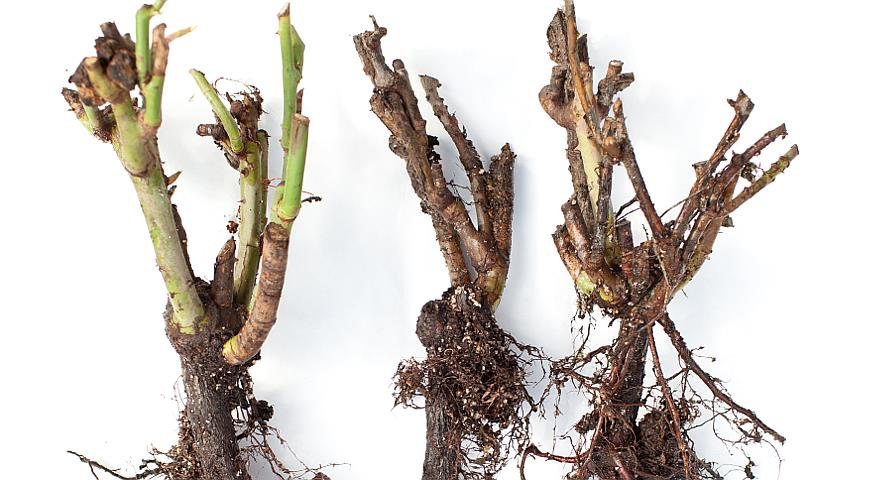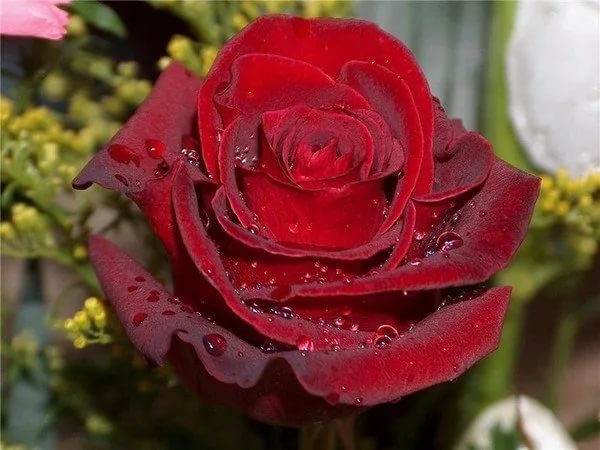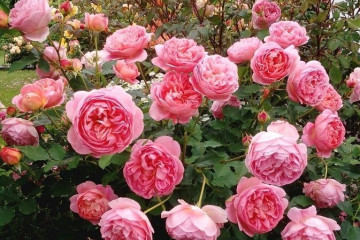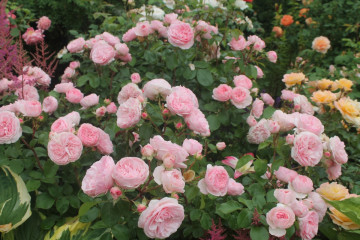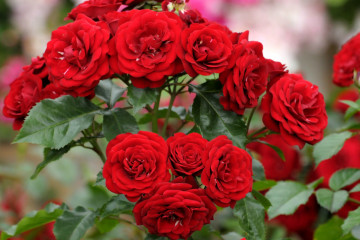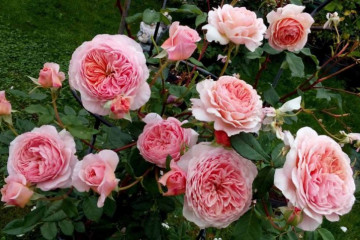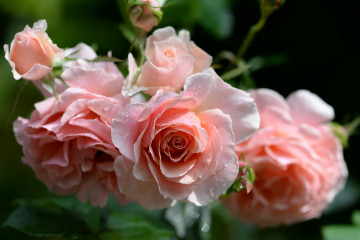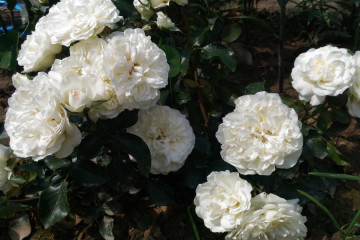Rosa Explorer (Explorer) - description of the varietal culture
Content:
Rosa Explorer is a beautiful dark red crop that has excellent decorative properties. Therefore, it is actively used in landscape design. The plant can be grown in different conditions, since it is unpretentious.
Rose Explorer (Explorer) - what is this variety
For the first time, the culture began to grow in the second half of the 20th century. At the same time, the agricultural technology was controlled by Felicia Seid. Particular attention was paid to cuttings that could be grown in harsh climatic conditions.
Rose Explorer includes more than 20 varieties of culture, which differ in description. This category includes both climbing bushes and shrubs.
It should be borne in mind that not all varieties are resistant to frost. But in any case, their parameters significantly exceed the roses of European origin. Each subspecies differs in flavor and attracts attention.
Rose Pink Explorer is often used to decorate personal plots.
Its indisputable advantages include the following:
- hardiness of flowers - they easily adapt to harsh climatic conditions;
- high immunity - the plant is resistant to diseases and parasites;
- abundant and long flowering - it is characterized by pronounced remontantity.
Use in landscape design
The rose of this variety is highly decorative. Therefore, it is often used to decorate garden plots. This culture is perfect for decorating hedges, arches and gazebos.
Advantages and disadvantages of the variety
The indisputable advantages of culture include the following:
- resistance to unfavorable climates;
- high resistance to pathogens of fungal infections;
- long and lush flowering.
Growing a flower, how to plant it in open ground
To succeed in growing a crop, it is necessary to provide it with complete and high-quality care.
For propagation of roses, ready-made seedlings should be used. You can buy them in nurseries or make your own by cuttings.
Spring is considered the ideal time to plant a plant. In this case, the flower will have enough time for rooting. The plant can also be planted in September or October. It is important that at least a few weeks remain before frost.
Choosing a location, preparing a flower
The plant is best planted in elevated areas that are well protected from the wind. Too high a location of groundwater can cause root rot.
Before planting, the soil must be dug up and organic matter added. It should be loose enough and have good drainage.
Planting procedure step by step
To carry out the landing, it is worth doing the following:
- Make 70 cm depressions.
- Add ash, compost, humus.
- Place drainage on the bottom and cover with earth.
- Place the seedling in the groove and gently spread the root system.
- Cover the depression with earth.
- Pour warm water over the seat.
When planting a rose before winter, it is recommended to cover it with hay. With the arrival of heat, young and strong shoots will form.
Plant care
Despite its unpretentiousness, the plant needs some attention. For a culture to stay healthy, it needs quality care.
- Watering rules and humidity
This crop is drought tolerant. However, in hot weather it needs to be watered once a week. After 2 days, the soil should be loosened.
- Top dressing and soil quality
The plant requires soil with neutral acidity parameters. Humus and wood ash can be added to the soil.
For lush flowering, it is worth adding mineral products with nitrogen, potassium and phosphorus.
- Pruning and replanting
To rejuvenate the bushes, pruning is carried out 1 time in 2-3 years. In this case, it is necessary to remove old shoots.
Compact bushes do not need formative pruning.
If there is no need to transplant the bushes, it is not required.
- Features of wintering a flower
For the winter, the bush should be spud and covered with a mulch layer. The branches must be bent to the ground and covered with non-woven material. In winter, cover the soil with snow, and in March, start airing.
Blooming rose
The culture is characterized by undulating flowering. During this period, beautiful single buds appear on the bushes.
The flowering of the culture begins much earlier than that of many varietal roses. The first wave falls in mid-May. After the end of flowering, a dormant period begins.
During the flowering period, it is worth removing wilted buds in time. This will help keep the culture decorative. Complex fertilizers can be applied between the flowering waves.
What to do if it does not bloom, possible reasons
The reasons for the lack of flowering are the following factors:
- the age of the culture;
- wrong choice of landing site;
- violation of the rules for pruning;
- root growth development;
- disease.
It is advisable to analyze the conditions of detention, normalize care and the rose bush will delight the owner with flowering.
Flower propagation
The easiest way to propagate a culture is by cuttings. This simple and proven method produces excellent results.
Cuttings are harvested in summer or autumn. In this case, the bush should not be in the flowering stage.
For harvesting planting material, it is worth choosing viable branches. The size of the cuttings should be 20 cm. All leaves should be removed from the segments, except for the top 2. Then place the cuttings in the grooves with an interval of 40 cm. They should be covered with a greenhouse.
Diseases, pests and ways to control them
The plant can be affected by sawfly larvae, caterpillars and rose leafhoppers. Pests slow down the development of bushes and negatively affect their flowering. To cope with parasites, Karbofos or Rogor are used.
To avoid the development of fungal infections, Bordeaux liquid can be used. When they appear, fungicides are used.
Such roses are distinguished by excellent decorativeness and help to create many interesting compositions. To achieve lush flowering, they need to provide quality care.

